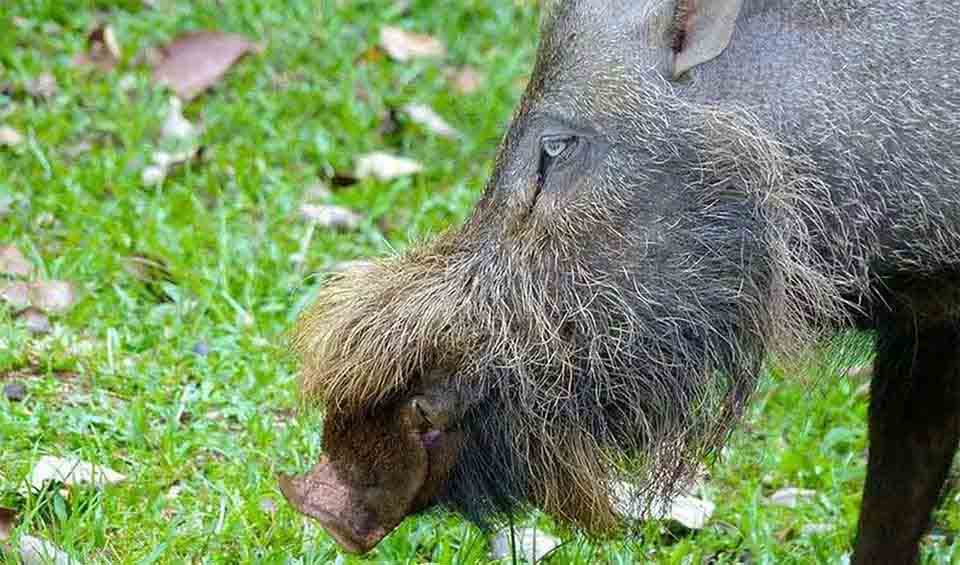Sus – Pigs
"Swine" is the generic term for pigs and hogs (older, bigger pigs)
This genus encompasses wild and domesticated pig species and showcases a remarkable combination of social complexity and animal intelligence. These creatures have been integral to human societies for thousands of years, serving as food sources, cultural symbols, and even subjects of scientific research due to their cognitive abilities and physiological similarities to humans.
Pigs are inherently omnivorous, and their diverse diet significantly affects their ecological impact. In the wild, they are adept foragers, utilizing their keen sense of smell to locate and consume a variety of organic materials. This includes leaves, roots, flowers, fruits, and animal matter such as insects, invertebrates, and small fish. This diet contributes to the health of ecosystems by facilitating seed dispersal and controlling insect populations.
On the other hand, domesticated pigs are often provided a controlled diet consisting primarily of corn and hay, enriched with essential nutrients to promote growth and health. The domestication of pigs has allowed for various breeds with different characteristics tailored for various agricultural needs, including meat production, leather, and medical research due to their physiological similarities with humans.
Despite their benefits, pigs pose significant ecological challenges, particularly when they become feral. Feral pigs, domestic pigs that have escaped and established wild populations, can cause extensive damage to ecosystems. They are known to uproot large areas of land for food, disturbing native vegetation and altering soil composition. This not only affects plant life but also disrupts the habitat for a variety of animal species. Additionally, their foraging can lead to the destruction of crops, causing economic losses to agriculture.
Moreover, feral pigs can act as disease vectors, posing health risks to wildlife, domestic animals, and even humans. Their wide-ranging diet and habitat preferences mean they can thrive in diverse environments, from forests to agricultural lands, making their management and control a significant challenge for conservationists and farmers alike.
Species in this genus
Visayan warty pig
Seeing one in the wild is a rare privilege due to its declining numbers and elusive nature
Javan warty pig
A face that looks both fierce and oddly noble
Bornean bearded pig
Has a shaggy “beard” of whiskers that hangs from its snout and jaw, giving it a scruffy, almost comical look
Philippine warty pig
Their warts aren’t just for show; they’re believed to provide protection during fights
Palawan bearded pig
A sizeable wild pig found only in the Philippines, still smaller than the closely-related species of bearded pig of Indonesia
Wild boar
They have an elongated and elastic snout that can be used to dig out roots and bulbs







